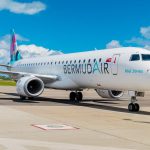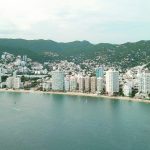Proceed with caution:
Destinations weigh in about how they're handling tourism in a COVID-19 world.
.Ann Ruppenstein.
COVID-19 continues to challenge the travel industry, as countries seek to find the balance between welcoming visitors back in a safe way and keeping instances of COVID-19 low in their respective destinations.
While economies rely heavily on tourism, many countries have shown that reopening too quickly can be detrimental to the health of a nation.
In a follow up to last week’s cover story, Travel Courier addresses the issue of responsible travel and tourism from the perspective of destinations.
Hear from tourism representatives for Jordan, The Bahamas, Belize, Saint Lucia, Puerto Rico and Costa Rica — as they navigate the complexities surrounding reopening to international travellers — or not — in a pandemic world.
Malia Asfour, Director for the Jordan Tourism Board, North America, says it’s tough to balance the need for tourism with whether or not it is responsible for travellers to come right now.
“Our economy in Jordan for example, like many other countries, relies heavily on tourism as a major contributor to the GDP, foreign currency earner and employs 11% of the workforce. The lack of tourism is crippling economies and the balance between health and tourism is still being studied and practiced with limitation in some countries,” Asfour tells Travel Courier. “Domestic tourism in most countries is the tester. It will be the first step in figuring out the new normal with social distancing, site management, health and sustainability being key factors. The balance has to come through bi-lateral agreements and protocols set by governments and tourism structures. Each bilateral agreement will most likely have different terms but overall similar goals of protecting citizens and creating a safe traveling environment.”
Malia Asfour
Director, Jordan Tourism Board, North America
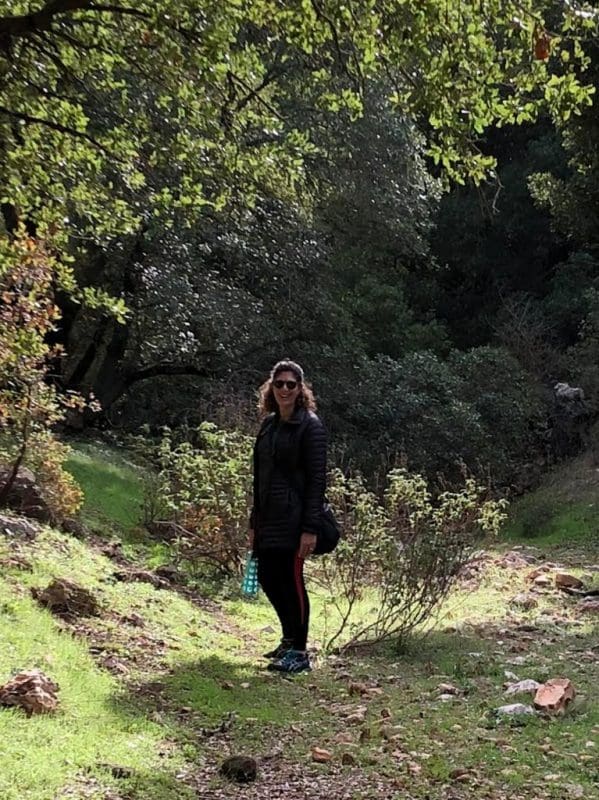
Before returning to a destination in the current climate, she says suppliers like tour operators and DMCs are going to base decisions around economics and health.
“The competitive edge that destinations will have will be through their cleanliness protocols and how they manage their flow of travellers within a new normal,” she says. “I believe tour operators and DMCs will have to draw up new legal agreements that protect them both and that the marketing of destinations will look different. We are longing for more wide open spaces where there is freedom to roam and less people.”
Asfour believes destinations that will come back first will be those with a good track record for flattening the curve, those with clear and strict guidelines and those with good medical infrastructure.
“Jordan for example took measures early on and flattened the curve. It is a good example of a destination whom, I believe, did it right. We have now opened the country to domestic tourism, this has helped us figure out how to manage the flow of travellers,” she continues. “We are all learning and I believe we need to learn together and from each other so that we can collectively as destinations come up with the best systems to keep our visitors safe, economies healthy and sustainable.”
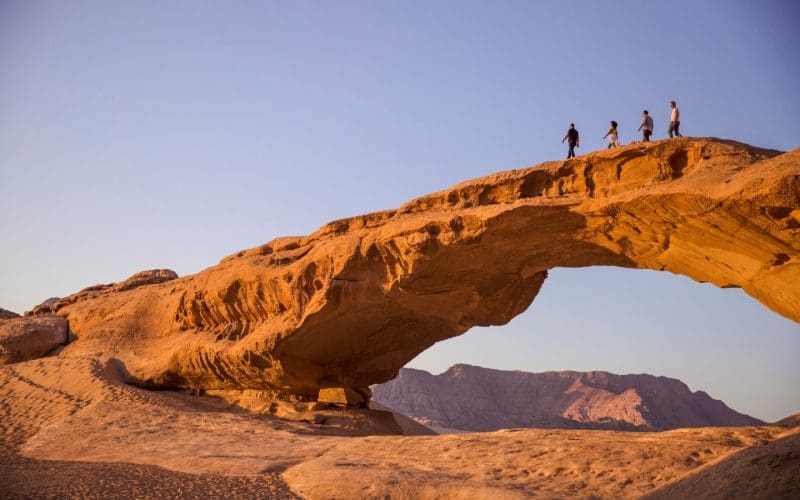
"Domestic tourism in most countries is the tester. It will be the first step in figuring out the new normal with social distancing, site management, health and sustainability being key factors."
Malia Asfour Tweet
Before travelling to a destination like Jordan, she points out that travellers should consider several factors like the health and hygiene protocols that were put in place.
“What has been put in place to ensure health security from the moment you enter an airport to depart for the destination, to the airline, to the arrival, airport experience, transportation, hotel, tours, etc… to the moment you are back,” she says. “Consider: What measures has the destination put in place to ensure my safety? What health and medical protocols are available for travellers? What type of waivers do I have to sign and what is the refund policy?”
Another focus will be around sustainability with many destinations focusing on implementing sustainable tourism practices prior to COVID-19.
“In Jordan, for example, we launched the Meaningful Travel Map of Jordan with Tourism Cares. The social enterprises on this map provide local experiences for travel and the income from travellers remains in the local communities. It is important to learn about supporting local businesses and communities when travelling.”
Canadians have been identified by the Jordanian government as a “Green zone” country open for travellers to come visit without a two week quarantine. The first flight out of Montreal on Royal Jordanian Airlines was on August 13. Under Canadian regulations, returning travellers still have to self isolate for 14 days.
“We hope once we iron out all the details that we will be able to encourage Canadians to travel to Jordan,” she says.
Saint Lucia’s Minister of Tourism Dominic Fedee says reopening to international travellers was a difficult decision for the Caribbean destination.
“I must tell you that we were really, really anxious and scared about reopening. We took the decision to reopen our borders when we saw that the cases were going up in our main source markets,” Fedee says. “It was the most difficult decision that we’ve had to make as a government, but it was the time to stand up and lead and do what we know is right. We were motivated by putting thousands of workers back to work and as well, saving dozens of local companies that were really feeling the pinch of being shut from COVID.”
Dominic Fedee
Minister of Tourism, Saint Lucia

With protocols in place such as all arriving passengers having to present a negative result from a PCR test done no more than 7 days prior to arrival, he says instances of COVID-19 have been very low since visitors have returned.
“I’m glad to see that the airport has reopened, tourists are coming off the planes and hotels are rehiring and they’re reopening. The beaches are no longer empty,” he says. “We were beginning to feel that we had a destination that was talked about as a ghost town. Now, I am very happy to see that there is some life coming back. Not only in the place but also our economy. This is really good to see and I am very excited that we’ve gone through the first month with no real outbreak.”
In fact, this week, the CDC reduced Saint Lucia’s COVID-19 rating to the lowest, Level 1, as one of only eight countries globally.
“We are encouraged by the figures that currently show Saint Lucia is leading the way in the Caribbean region with the lowest number of COVID-19 cases per capita. We are certainly not complacent, and the measures we have put in place have helped us to achieve such a positive record,” he says. “These results will show potential visitors that our responsible approach to re-opening and providing a safe environment for a holiday is a good reason to choose Saint Lucia. We have safely welcomed more than 2,000 visitors to Saint Lucia since reopening July 9, and to know that they have had a positive holiday experience here gives us optimism for the future.”
He stresses the importance that travellers adhere to the guidelines set in place for the safety of visitors and locals alike.
“Look at the fine print to see whether you can accept the protocols that are listed,” he says. “We had one woman who actually defied the guidelines of the hotel and went running everyday and you just need to work with the hotel and you’ll be fine. That’s the best thing you can do. It’s not easy for any of us — we all want to continue to work together, to keep all of us safe, and really just avoid crowded places and adhere to the guidelines set out by the hotels.”
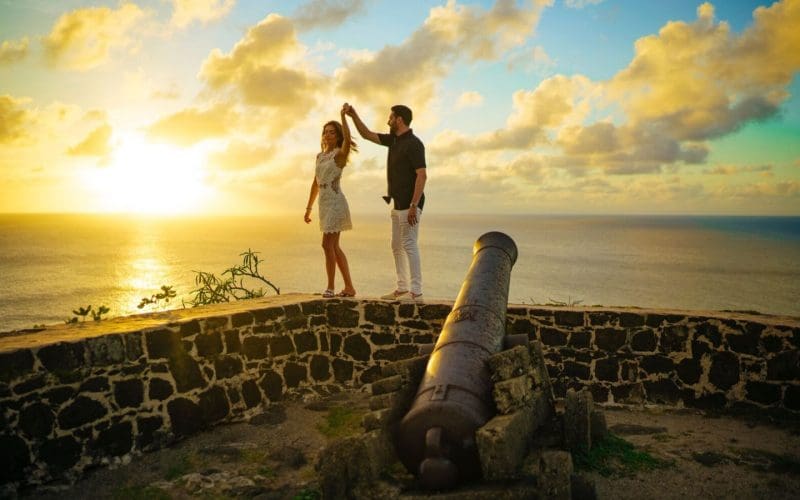
“[Reopening] was the most difficult decision that we’ve had to make as a government, but it was the time to stand up and lead and do what we know is right. We were motivated by putting thousands of workers back to work.”
Dominic Fedee Tweet
Similar to how 9/11 changed the industry, Fedee says the pandemic has and will continue to change tourism.
“To see the number of people wearing masks, the amount of times you sanitize and wash your hands. The number of signs that are up giving people advice in terms of how to protect themselves from the likelihood of contracting COVID,” he says. “It certainly will present new standard operating procedures for tourism.”
Overall, he says it is going to be very difficult for people to return to business in the current climate.
“First of all, the demand itself, not only because of COVID but also because of the economic circumstances surrounding the travel market globally. I think that a lot of companies are going to be looking at that and watching to see what happens. But then they’re also balancing that fact with their own situations internally and every day that they keep their cruise line or their hotel shut or not in operation, what you do find is that it is costing them money as well. I think a lot of people are anxious to get back to business, to reopen. But I think the environment will have to be conducive. It’s very hard to give advice because COVID is so fluid. Everyday something is happening.”
With tourism making up 8.2% percent of Costa Rica’s GDP, the country’s tourism minister Gustavo Segura Sancho says its tourism industry provides millions of jobs and is essential to the country’s economic growth and development.
“In 2019, more than 3.1 million international travellers visited the country,” he tells Travel Courier. “COVID-19 has severely impacted the country’s economy, and by travelling responsibly to Costa Rica, the country can begin to recover.”
On Aug. 1, Costa Rica reopened its borders to Canada, the United Kingdom, the Schengen Area and select countries within the European Union. More recently, Costa Rica made headlines for also allowing American travellers — from Connecticut, New Hampshire, New Jersey, New York, Maine, and Vermont — back starting Sept. 1.
Gustavo Segura Sancho
Tourism minister, Costa Rica

In order to enter the country, there are many protocols in place to ensure the destination safely manages tourism. For example, a negative COVID-19 test taken within 48 hours prior to the travelling date to Costa Rica must be presented.
“Safety is the top priority and for this reason, Costa Rica’s government, Ministry of Health and Tourism Board are working together to ensure a safe and successful recovery,” he says. “During the crisis, many tourism companies in Costa Rica have established new health and safety policies, made repairs, implemented employee training, and explored new travel incentives. While borders were closed to international travellers, the Costa Rica Tourism Board worked to promote local tourism.”
Before visiting, he says travellers should consider their health and any preexisting conditions that would make them more susceptible or put them or others at risk of contracting COVID-19, as well as their country’s reentry COVID-19 policies.
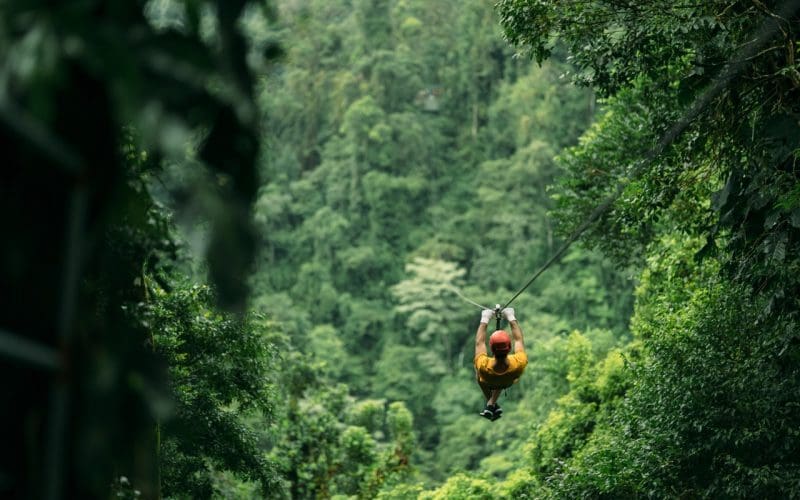
“Tourism makes up 8.2% percent of Costa Rica’s GDP. Costa Rica’s tourism industry provides millions of jobs and is essential to the country’s economic growth and development.”
Gustavo Segura Sancho Tweet
“Travellers planning a visit to Costa Rica must comply with the following health and safety protocols issued by Costa Rica’s government and Ministry of Health, to ensure a safe and enjoyable visit, he says. “Travellers should read up on Costa Rica’s COVID-19 health and safety policies before departing, and ensure they’re abiding by the policies during their stay. It is recommended that travellers continue to use caution on the ground and avoid crowded areas and maintain 6-feet distance apart from others. By following Costa Rica’s health and safety protocols, travellers can still enjoy their vacation and will be contributing to Costa Rican communities and businesses that depend on tourism.”
He points out that Costa Rica boasts numerous nature and wildlife experiences that make social distancing easy, like national parks, beaches, volcanoes, and ziplining. Costa Rica is also one of the countries to receive the WTTC Safe Travels stamp, given to those who comply to its health and safety measures and protocols, which take into account current WHO and CDC guidelines.
“The Costa Rica Tourism Board has advised its public and private tourism partners to allow for more flexible change and cancellation policies, to help reduce the spread of COVID-19 between individuals and within the destination,” he says. “The Costa Rica Tourism Board, with the support of the private sector, designed a set of 16 protocols to ensure the safety of both national and international tourists. The protocols, which were authorized by the Ministry of Health, outline specific processes and guidelines for tour operators, cruises, airlines, hotels and other tourism companies.”
Brad Dean, CEO of Discover Puerto Rico, says there’s no denying that tourism is a crucial sector of Puerto Rico’s economy.
“It accounts for roughly 6.5% of the island’s GDP and impacts nearly 80,000 jobs,” Dean tells Travel Courier. “However, as the island’s Destination Marketing Organization, we work closely with island officials to ensure the safety of all residents and visitors, which currently means encouraging only essential travel. Once restrictions lift and the island is ready to reopen, travellers will be welcomed with the warm hospitality that vividly marks the Puerto Rican people.”
Brad Dean
CEO, Discover Puerto Rico

With the island’s official reopening for inbound tourism postponed in order to safeguard visitors and residents, he says a new reopening date will depend on a continuous assessment of the situation in Puerto Rico and in the United States, which will influence island-wide orders that prioritize health and safety.
“Although Puerto Rico is encouraging only essential travel at the moment, it is important to note that the island exercised an abundance of caution from the onset of COVID-19,” he says. “Puerto Rico was the first U.S. destination to use thermographic cameras in their airport and implement a curfew, effective for everyone including tourists… The current restrictions in place are all aimed at continuing to ensure the safety of visitors and residents alike.”
Those who must travel to the island during this time are required to fill out a Travel Declaration Form through the Puerto Rico Health Department’s online portal, get a molecular COVID-19 test (nasal or throat swab) no more than 72 hours prior visiting the island and show proof of a negative result, or they must quarantine.
“In addition to this, Puerto Rico is enforcing local measures developed by the Puerto Rico Tourism Company, alongside U.S. Travel Association guidelines, such as social distancing, face coverings in public areas and a variety of mandates for businesses – including, but not limited to, reduced capacities and high standards of cleanliness in accordance with CDC and EPA guidelines,” he says.

“In Discover Puerto Rico’s case, our work to ensure the island was set up for a strong recovery began in tandem with the virus’ spread. We know from experience that robust planning is needed to lay a solid foundation for recovery.”
Brad Dean Tweet
Dean notes there are a multitude of factors that tour operators, cruise lines and airlines should evaluate prior to returning to destinations, going well beyond the regulations at play from the organizations that dictate much of what these entities can do and should be mindful of, like the CDC, CLIA, FAA and others.
“Ultimately, a strong Destination Marketing Organization will provide these entities with a thorough understanding of the realities of returning to a destination,” he says. “In Discover Puerto Rico’s case, our work to ensure the island was set up for a strong recovery began in tandem with the virus’ spread. We know from experience that robust planning is needed to lay a solid foundation for recovery. Private sector partners also play a role in helping with the destination’s readiness to welcome visitors back. Alongside our local government, we acted quickly to contain the virus and remain vigilant as we seek to reopen, for the safety and security of residents, visitors and the entities – including tour operators, cruises and airlines – that we value.”
In order to ensure they aren’t having a negative impact on the places they visit, he says travellers should stay up to date with guidelines implemented by destinations they intend to visit, and adhere to them, accordingly.
“Puerto Rico’s, at present, include social distancing, and mandatory face coverings in public areas, as well as reduced capacities and high standards of cleanliness island-wide,” he says. “Given that Puerto Rico is currently encouraging only essential travel to safeguard the health of both residents and visitors – and according to Customs and Border Protection (CBP), activities such as sightseeing, recreation, or attending cultural events, are not considered essential – it is important to uphold these measures, to avoid a negative impact.”
Overall, he enforces that those travelling adhere to the restrictions being implemented by the destination where they are travelling – be it the need for a negative test to enter, mandatory quarantine, or requirements once on the ground.
Looking towards the future, he says Discover Puerto Rico is committed to leading the Island’s tourism recovery.
“We began working on the COVID recovery plan at the onset of the virus, and have taken learnings from past adversity and applied them to our robust crisis preparedness plan which was already in place before COVID-19,” he says.
Given a steady increase in positive COVID-19 tests since reopening borders to international travel on July 1, The Bahamas reviewed its guidelines for arrivals. The Caribbean destination is currently under a national lockdown order set to end today. Upon reopening, travellers will have to follow protocols such as complete a Bahamas Health Visa application, present a negative COVID-19 PCR test taken within 10 days of arrival and quarantine for 14 days upon arrival.
“Our hope is to limit community spread of the virus, a more difficult task given the number of islands and cays that make up The Bahamas. However, we were successful once before and anticipate controlling the virus’ spread in The Bahamas once again,” Joy Jibrilu, Director General of The Bahamas Ministry of Tourism tells Travel Courier. “Our number one priority is ensuring The Bahamas is a safe and clean destination for all to enjoy. We hope travellers will feel confident that The Bahamas is in fact, a safe country to enjoy.”
Joy Jibrilu
Director General, The Bahamas Ministry of Tourism

By following the protocols set in place prior to and on arrival, Jibrilu says visitors can ensure they aren’t having a negative impact on the destinations they visit.
“This goes a long way to protecting our residents as well as other visitors from the spread of the virus,” she says. “In addition, we have asked that all travellers wear a face mask in any situation where it is necessary to enforce physical distancing guidelines such as navigating air and sea terminals, collecting luggage, for the full duration of taxi rides and while waiting to be seated at dining establishments.”
Ultimately, she says every person will make up their own minds on when it is right for them to travel.
“The Islands of The Bahamas relies heavily on tourism,” she says. “The fastest way for tourism to recuperate in The Bahamas is to adhere to the protocols we have put in place namely, observing the mandatory quarantine coupled with travellers uploading their negative COVID-19 PCR test. This is our new normal for the foreseeable future until there is a vaccine in wide circulation.”
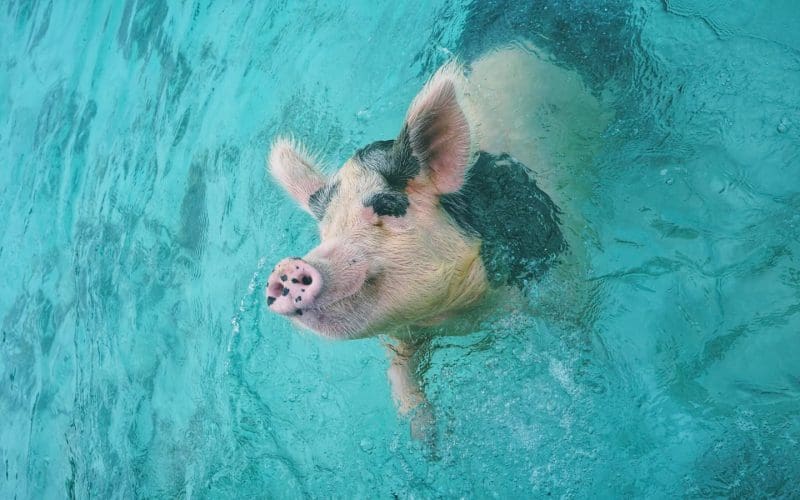
"The fastest way for tourism to recuperate in The Bahamas is to adhere to the protocols we have put in place namely, observing the mandatory quarantine coupled with travellers uploading their negative COVID-19 PCR test. This is our new normal for the foreseeable future until there is a vaccine in wide circulation."
Joy Jibrilu Tweet
Looking to the travel industry from tour operators and cruises to airlines, she says everyone is a partner and everyone can work together in the comeback of tourism.
“We must rely on airlines following their own protocols and procedures for example, to ensure that they are carrying healthy visitors to our country,” she says. “By the same token, airlines will want to ensure that we have done everything possible to keep visitors healthy in destination for their return flight. Communication and education are the keys to a successful partnership.”
Meanwhile, Belize recently decided to delay reopening its international airport as a cautionary measure following a spike in COVID-19 cases.
“As the official destination marketing organization for the country, the safety and comfort of our visitors and residents are of utmost priority for the Belize Tourism Board,” says Karen Bevans, Director of Tourism, Belize Tourism Board. “We are continually assessing risks and working with the Belizean government and our partners to create protocols to ensure a safe environment for residents and guests when international visitation resumes. We want to invite visitors to our shores in a safe and responsible manner, and so we cannot soundly open our borders at this time without serious repercussions.”
Karen Bevans
Director of Tourism, Belize Tourism Board

A new date for re-opening will be determined based on further developments in country.
“The COVID-19 pandemic has changed the travel industry in unimaginable ways for destinations across the globe,” she says. “Health and safety should be a key priority for travellers when choosing a vacation destination, and travellers must be proactive and seek out information on the destination to find out how their vacation experience might be impacted given new protocols in light of COVID-19. Belize is committed to enhancing our tourism product to be able to welcome back visitors safely and responsibly.”
Some key considerations for Canadians to consider when Belize reopens for travel include new entry protocols like registration on the Belize Health App – a health monitoring app which seeks to monitor visitor health and assist with contact tracing if necessary. Belize has also implemented a new Tourism Gold Standard Recognition Program for hotels and tour operators in the country.
“This 9-point program seeks to enhance the tourism industry’s health and safety standards by adapting new behaviours and procedures to ensure both employees and travellers are confident in the cleanliness and safety of Belize’s tourism product,” she says, adding that during phase 3 of the reopening of the industry, only Gold Standard Hotels approved to reopen within the Tourism Safe Corridor will be permitted to host international travellers.
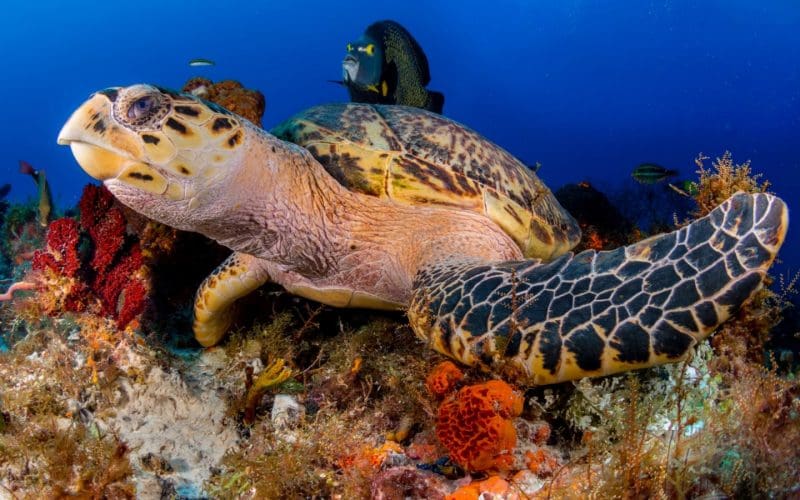
"We want to invite visitors to our shores in a safe and responsible manner, and so we cannot soundly open our borders at this time without serious repercussions."
Karen Bevans Tweet
It’s also recommended that visitors bring proof of a COVID-19 PCR test from within 72 hours of their flight to Belize.
“After you arrive in Belize, you will need to proceed to health screening where officials will gather information on your travel history, take your temperature using thermal imaging cameras or other non-contact temperature screening, and submit for a COVID-19 rapid test if you did not bring along a negative test result,” she adds. “If the test is negative, you will proceed to immigration and customs processing. A positive test result requires mandatory quarantine for 14 days at the guest’s expense. A subsequent negative test is necessary in order to exit quarantine.”
Before coming back to a destination as a supplier in these times, she says it is important to look at the rate of COVID-19, the overall role of the government in implementing health & safety protocols to protect both residents and visitors, alignment of protocols with official global health organizations, the county’s health care system, the ability to get travellers back to their home country quickly in case of a shutdown and the destination’s overall management of the pandemic.
“Our partners should look at these factors and ensure that they are working with us as destinations that are implementing high standards of health, safety and cleanliness and are keeping them up-to-date on everything that is being done to manage the pandemic’s impact,” she says. “We look forward to welcoming Canadians once again. We are doing all we can to ensure the health and safety of our visitors and residents. Our accommodations, tour operator and tour guides have enhanced their cleaning and sanitization and implemented protocols necessary to provide a safe vacation experience.”


